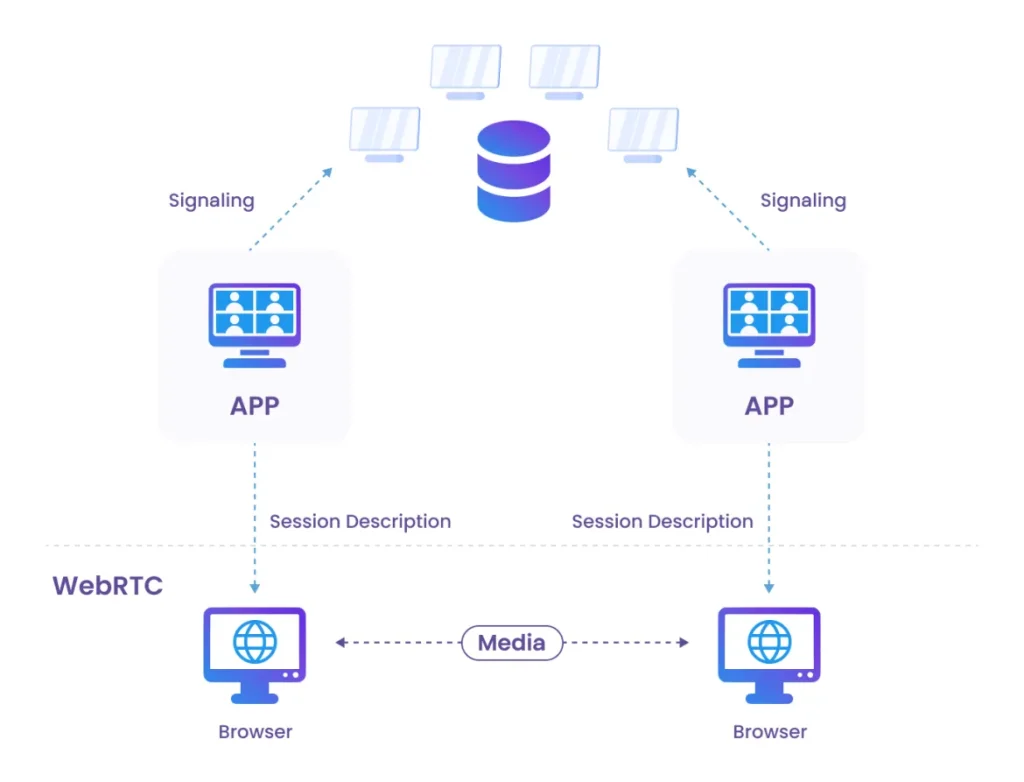The Significance of WebRTC Monitoring Services for Facilitating Uncomplicated Communication

In this modern digital world, real-time communication is essential in different industries, such as telemedicine, online education, and customer service. Most of these industries use communication applications built on WebRTC to ensure seamless interactions, minimal latency, and high-quality connections.
This is where WebRTC monitoring services come in handy. Businesses and developers can benefit from their assistance in monitoring performance, determining potential issues, and improving WebRTC applications to deliver the best possible user experience.
In this article, I will explain the significance of WebRTC monitoring services to facilitate uncomplicated communication.
Let’s start!
Understanding WebRTC Monitoring
The Web Real-Time Communication (WebRTC) protocol allows browsers and devices to connect directly with one another to share data, voice, and video, eliminating the need for third-party plugins.
WebRTC applications, on the other hand, are beset by issues such as jitter, packet loss, and latency despite offering a multitude of advantages. WebRTC monitoring services that provide real-time insights into these challenges allow businesses to detect network anomalies before they affect users, preventing them from experiencing negative consequences.
- It is possible to enhance the quality of your calls by optimizing the utilization of your bandwidth.
- To ensure that the connection is functioning reliably, you should analyze the data.
- By taking preventative measures to address problems, you may ensure that downtime is avoided.

Applications That Are Built with WebRTC Typically Face the Following Obstacles
Even though WebRTC is a powerful technology, apps that use it are vulnerable to various issues that could potentially result in a less satisfying experience for the user. Here are some of the most significant issues that have been brought to light:
Unstable Performance of the Network
As a result of the fact that WebRTC is dependent on internet access, the quality of the video and audio transmission may be impacted by variations in the conditions of the network. Choppy conversations, lag, and frequent call dropouts are frequently the result of problems such as insufficient Wi-Fi signals or intermittent broadband connections when they are present. These variables can also be the cause of frequent call drops.
Jitter and Packet Loss
Jitter is a phenomenon that occurs when data packets arrive at irregular intervals, which can have an effect on the synchronization of both audio and video. The term “jitter” alludes to this phenomenon. It is possible to experience packet loss, which is the opposite of packet loss, when data does not arrive at the location where it was intended to be. As a consequence of this, words can be omitted from discussions or video frames can become frozen.
Latency Issues
A high latency may cause considerable delays between recording spoken words and playing audio. This is one of the problems that might arise from latency. It presents a particularly difficult challenge in circumstances where real-time participation is absolutely necessary, such as when providing customer service, conducting telemedicine consultations, or engaging in activities that include live broadcasting.
Security-Related Concerns
Even though WebRTC uses encryption protocols like DTLS and SRTP, there are still issues regarding security vulnerabilities, such as unauthorized access and data leakage. These vulnerabilities are caused by WebRTC’s use of encryption methods. Proper monitoring can identify vulnerabilities and help prevent them from developing into severe threats.
Features of WebRTC Monitoring Solutions
When it comes to WebRTC monitoring solutions, the quality should be such that it provides comprehensive insights into the running of the system, the user experience, and the potential security risks that may arise. The following is a list of significant qualities that should be looked for among candidates:
Analysis of the Data in Real Time
The operation of the network, the quality of calls, and the behavior of users are all areas that may be monitored by a good monitoring tool, which can provide statistics in real time. It makes it possible for businesses to identify and implement solutions to problems as they occur, preventing disruptions in communication throughout the entire organization.
Notifications and Diagnostics for Issues That Are Automatically Generated
Proactive monitoring systems will quickly send out notifications if performance metrics are found to be different from the projected values. These automated notifications allow teams to take prompt action, which reduces downtime and increases productivity.
Calls Are Covered in Detail in the Reports
When detailed information on call duration, packet loss rates, latency, and jitter levels is considered, substantial insights into the system’s functioning can be acquired. The reports allow developers to fine-tune their apps, which increases their overall quality.
Optimizing Bandwidth
Effective bandwidth management is crucial for WebRTC applications when dealing with large user bases. Monitoring tools can optimize bandwidth consumption, helping to prevent congestion and ensure that calls remain stable.
A Monitoring System for Security and Compliance
Monitoring systems aid firms in complying with data protection requirements and improving overall security by regularly monitoring connection logs and encryption procedures. This helps organizations maintain compliance with information security standards and improves businesses’ overall security.
Strategies for Ensuring That WebRTC Works Properly
Monitoring the network circumstances through the deployment of real-time analytics is vital to identifying and repairing connectivity issues before they interrupt users. This is necessary to guarantee the greatest possible performance of WebRTC apps.
Media encoding optimization through codec parameter modification helps achieve a balance between quality and bandwidth usage. Adaptive bitrate streaming ensures that video quality remains consistent even when network circumstances fluctuate.
Encryption from beginning to finish is one example of the comprehensive security methods that can be utilized to achieve the goal of providing protection against potential cyber threats. In addition, by testing and updating their apps on a regular basis, organizations are able to discover vulnerabilities and performance bottlenecks in their systems. The completion of this helps in guaranteeing that consumers will have a problem-free experience when utilizing the software.
Artificial Intelligence in the Process of WebRTC Monitoring
The rise of artificial intelligence (AI) has increased the efficiency of WebRTC monitoring, which has become even more effective. One capability of monitoring solutions powered by AI is the ability to predict possible problems based on historical data.
- If the configurations of the network are automatically adjusted, the performance of the network will receive an improvement.
- Determine the potential dangers to the security system in real time.
- It is possible to improve the overall quality of the user experience by dynamically altering the amount of bandwidth that is allocated.
By utilizing WebRTC monitoring powered by artificial intelligence, organizations can improve the quality of their calls, decrease the amount of time their systems are out, and raise the overall reliability of their systems.
Final Words
WebRTC technology revolutionises real-time communication, allowing businesses across industries to provide seamless video and voice interactions. However, without proper monitoring, even the most advanced WebRTC applications can suffer from performance issues. Investing in reliable WebRTC monitoring services is crucial to ensuring connectivity and minimizing latency.
For expert solutions tailored to your business needs, Clover Dynamics offers advanced monitoring and development services.




